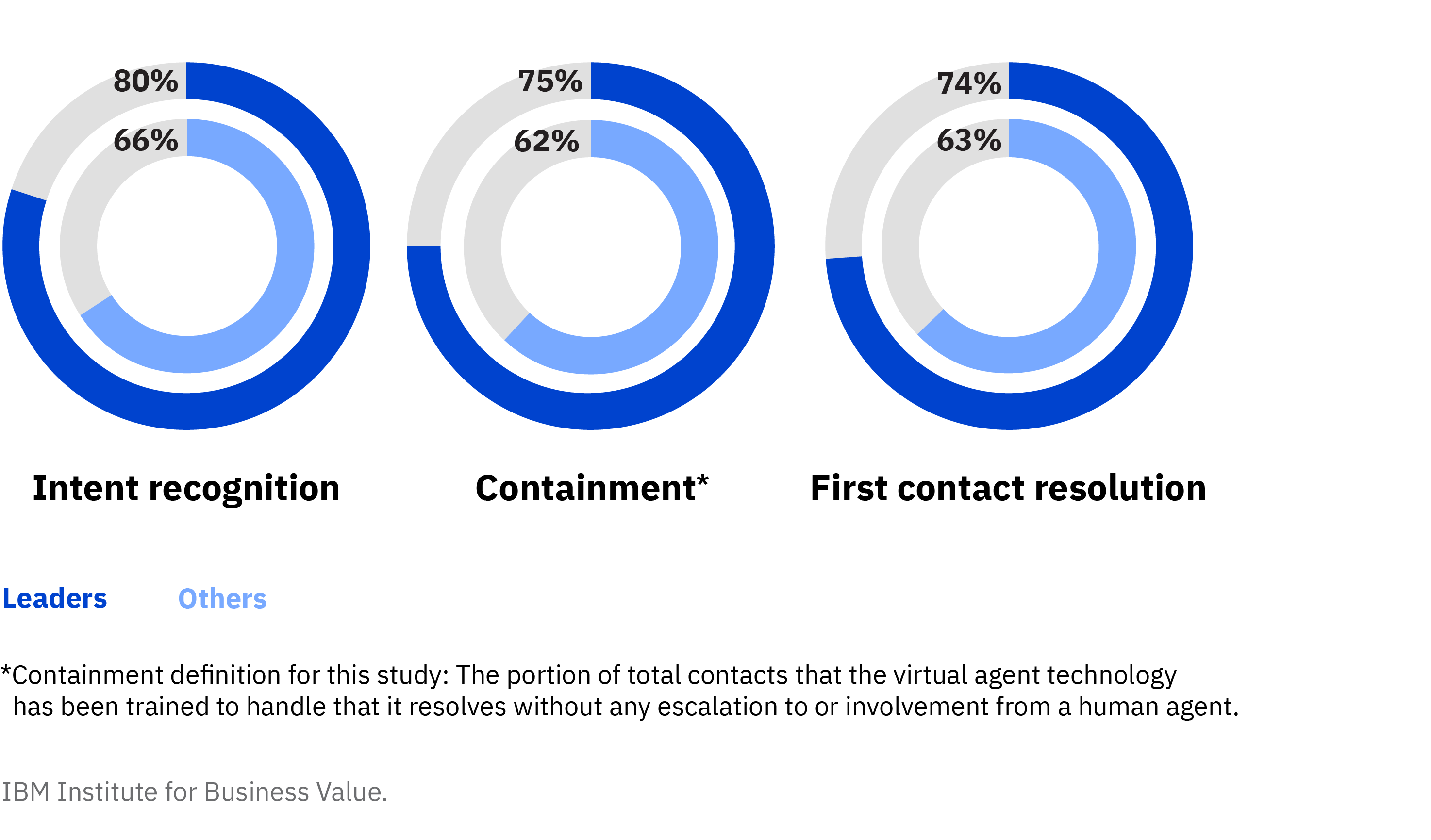The value of virtual agent technology
The COVID-19 pandemic has rocketed the adoption of virtual agent technology (VAT) into hyperdrive. For emergency situations, when speed and simplicity are mission critical, out-of-the-box implementations can go live in a matter of hours. However, companies that thoughtfully design, develop, and deploy VAT have the potential to unlock even more value for their organizations and their users, be they customers, employees, or human agents.
Until now, actual data about VAT performance has been limited to individual case studies, making it difficult for organizations to derive meaningful comparisons. So the IBM Institute for Business Value (IBV), in cooperation with Oxford Economics, surveyed 1,005 respondents across 12 industries and 33 countries to gather performance data from organizations employing VAT daily, in live situations, for periods from six months to just over four years.
99% of respondents report an increase in customer satisfaction as a result of using virtual agent technology.
As we embarked on this research, we knew organizations needed answers to four key questions:
- How efficient is AI-enabled VAT?
- What are the key attributes and practices that drive value from VAT?
- What is the impact of AI-enabled VAT on customers, end users, and human agents?
- What impact does VAT have on organizations’ financial performance?
Our analysis revealed that VAT is having a positive impact on nearly every measure, including customer satisfaction, employee satisfaction, and revenue, and an exceedingly high proportion of respondents (96 percent) have achieved, or expect to achieve, their anticipated ROI.
96% of respondents have exceeded, achieved, or expect to achieve their anticipated return on investment for their virtual agent technology implementation.
Lessons from the leaders
Our analysis identified a small group of virtual agent technology pioneers we have identified as leaders. Each leader demonstrates three critical attributes that decision makers directly influence:
- Early adopter of VAT
- Large proportion of inbound contacts are within the scope of their VAT
- High degree of integration exists between their VAT and backend systems.
Comprising 10 percent of our sample, leaders span all industries and regions surveyed, as well as all three types of VAT implementation, in almost equal proportions. Leaders also report outperforming their competition on revenue and profitability for the last three years. And they outperform other respondents on core metrics used to measure the efficiency of VAT.
Virtual agent technology leaders outperform their peers in three key areas

Learn what sets these leaders apart—and how virtual agent technology can help your organization realize customer, agent, and financial benefits.
Meet the authors
Joe Petrone, Partner and Global Cognitive Care Offering Leader, IBM ConsultingGillian Orrell, Performance Data and Benchmarking Lead, IBM Institute for Business Value
Download report translations
Originally published 02 May 2021


